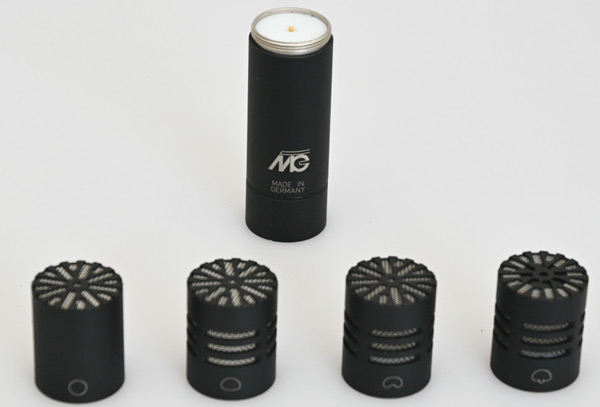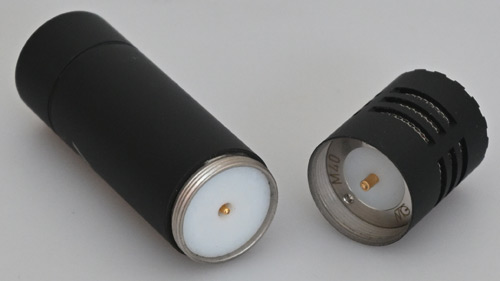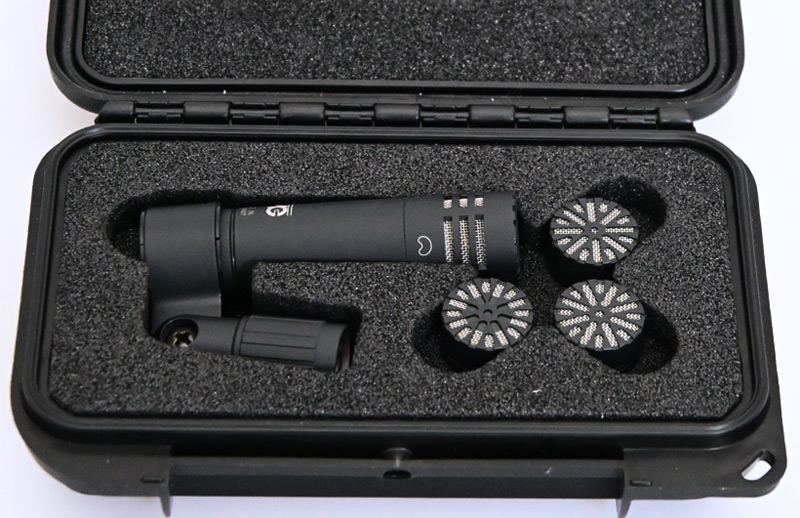Microtech Gefell Generation 4
Modular condenser microphone system
Author and photos: Peter Kaminski
Microtech Gefell announced the new Generation 4 microphone series around two years ago at the 2023 Audio Engineering Conference. The company took its time to thoroughly test and optimize the series for practical use in advance. It has been available since 2025.
Development
First of all, many people will surely wonder how the designation Generation 4 came about, since there was no such obvious generation designation in the past. So let's take a look back. It all began with the CMV 3, a model from 1936 that featured the M7 capsule with a PVC diaphragm, which can be considered the first generation. This was followed in 1950 by the CMV563 - M7S tube microphone, which can be referred to as Generation 2, and then in the 1970s by the SMS 70 and SMS2000, Generation 3 - products that are still available today. However, the future lies in the MV400 preamplifier with M4x capsules. The Generation 4 series has a modular design, allowing preamplifiers and capsules with different directional characteristics to be combined as desired. Separate preamplifiers and capsules have actually been around since the first generation. But now they are truly modular.
Udo Wagner, Director of Sales & Marketing at Micotech Gefell, told us the following about the history of the product's development: "Christian Birkner from HTWK Leipzig and René Rodigast from Fraunhofer IDMT in Ilmenau approached us at around the same time and told us that both institutions were very interested in developing a series of microphones with special features. There was also a specific need for the purchase of such microphones, for example for 3D [audio] projects. At the same time, we were in the process of rethinking our modular series while taking proven traditions into account."
Capsules
All microphone capsules are condenser capsules with a PE diaphragm and the same design as those in the SMS 2000 series. The diameter of the metal housing is 21mm, and the height of all capsules is 26mm. This means that the Generation 4 capsules from Microtech Gefell are similar in size to many other modular studio rod microphones (Schoeps Colette 20mm, Neumann KM series 22mm, sE8 23mm). However, the term “small diaphragm microphone” is somewhat of an understatement for this group of microphones.
At the time of testing, capsules with four directional characteristics were available, namely:
- M40 cardioid
- M41 supercardioid
- M42 omnidirectional
- M43 wide cardioid
Technical data
We would also like to briefly present the most important technical data for the individual capsules here. The manufacturer specifies the frequency response of all capsules as 20Hz to 20kHz and the dynamic range as 132dB or 133dB for the M 43. Here is an overview of further data in the form of a table. The values were measured using an MV 400 preamplifier.
| Model | Sensitivity 1 | Noise 2 | SNR 3 | Max. SPL 4 |
|---|---|---|---|---|
| M 40 | 13 mV/Pa | 25dB | 69dB | 146dB |
| M 41 | 14 mV/Pa | 23dB | 71dB | 146dB |
| M 42 | 15 mV/Pa | 25dB | 69dB | 145dB |
| M 43 | 11 mV/Pa | 26dB | 68dB | 148dB |
1 @1kHz | 2 CCIR 468-4 | 3 1Pa@1kHz, CCIR-weighted | 4 @0,5% THD
Preamp
Two preamplifiers are built using the SMD technology, and they differ only in their connections. The MV 400 X is equipped with an XLR-3-M socket, while the MV 400 L has a LEMO connection. The technical data are therefore identical for both models. Only the length of the amplifier differs between the models. The MV 400 X is 75mm long without the connector, while the MV 400 L is only 46.5mm long. In addition to the Generation 4 capsules, the capsules of the SMS 2000 series can also be used with the MV 400.
The amplifiers are powered by 48-volt phantom power. The operating current is approximately four milliamps. Impedance conversion is performed without a transformer using a transistor circuit. The output impedance is 100 ohms. Microtech Gefell specifies the maximum output level at 0.5% THD and 1 kiloohm load as 17.2dBu.
Accessories
The components, i.e., preamplifiers, capsules, and accessories, are all available individually. There is a storage box MC 4.01 (see fig. above) for four capsules, a preamplifier, and the microphone holder MH 93.1. Other accessories include the microphone clamp MH 22 and the windshield (see fig. below) W21.
There is also a TS 10 table stand (see image above) with a thread, so that the microphone holder with the preamplifier module and capsule can be screwed directly onto the stand.
Practical application
For the test with Generation 4, we recorded grand piano, speech, and percussion, and compared the results with various other modular microphones with similar capsule diameters. I would describe the general sound character as very neutral with a slightly warm note. In terms of sound, the capsules with the pressure gradient receivers M 40, M 41, and M 43 are very similar. Hypercardioid microphones are sometimes more problematic in terms of sound than other directional characteristics, but even for the most demanding applications, I would have no reservations about using the M 43 hypercardioid microphone for instrument recordings. In terms of sound, the M 42 with omnidirectional directional characteristic sounds slightly different from the others. Firstly, the bass is naturally a little more present and fuller, as is usual with pressure-sensitive capsules. Secondly, it is a little more present in the high frequencies. This is probably also due to the frequency response curve, as there is a boost of approx. 9dB at just under 10kHz. This characteristic is slightly greater than with most omnidirectional capsules. However, this has a positive effect, especially at greater distances from the sound source. But even at normal distances, the percussion recordings (wooden sticks struck together) had slightly more transients than the other microphones used for comparison.
But it's not just the sound that is decisive when choosing a microphone. The compactness of the microphones must also be emphasized. Even the larger version with an XLR connector is only 101mm long without the plug, and the version with a Lemo connector is only 73mm long. Especially when recording concerts that are also being recorded on video, the visibility, or rather the invisibility, of a microphone is an important factor - and here the Generation 4 offers an advantage over many others. Capsule pre-attenuation and a high-pass filter have been omitted. But when you consider the maximum sound pressure, pre-attenuation does not seem to be absolutely necessary.
Conclusion
The MV400X and MV400L microphone preamplifiers cost around €770, while the individual capsules are priced at around €840. Sets are not offered, as the series has a modular character. So, for a complete microphone, you're looking at around €1,600. We find the price to be absolutely reasonable considering the high sound quality and workmanship. After all, this is top-of-the-line equipment. For around €80, you can also get a storage case for a preamplifier and capsules.
It is certain that the capsules currently available at the time of testing will not be the only ones offered. For example, I could imagine a capsule with omnidirectional characteristics that is designed more for direct sound use or closer sound sources. Microtech Gefell also has other series in its range whose concepts could certainly be incorporated into Generation 4. So there is still great potential for expansion for Generation 4 in the future. We are excited to see how this remarkable series will be further developed.
 How to resolve AdBlock issue?
How to resolve AdBlock issue? 




